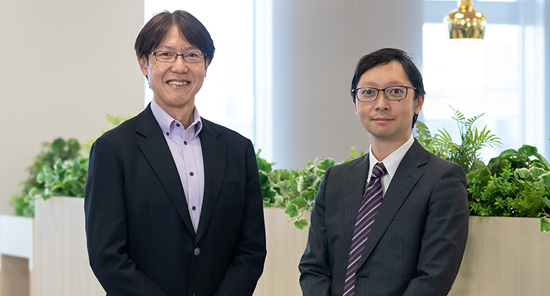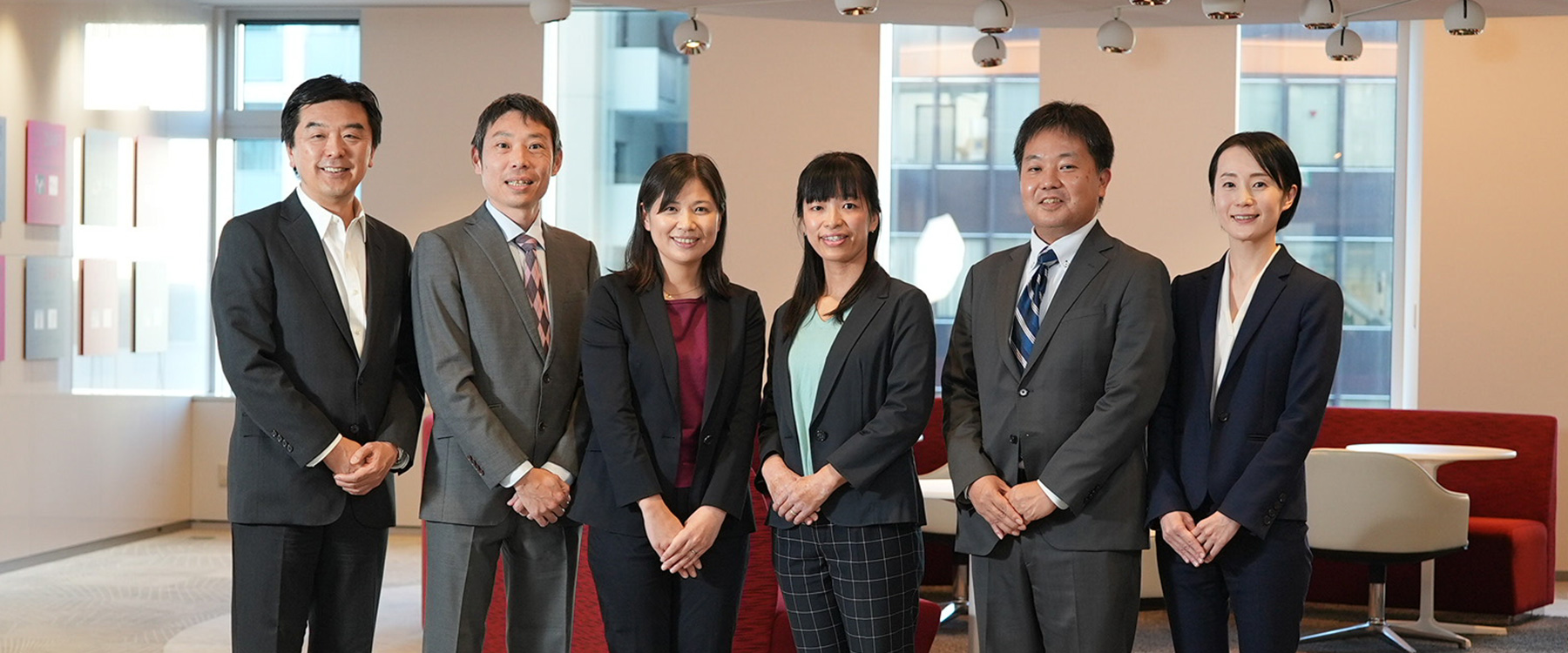

Research, development and "ikuyaku"(drug fostering and evolution)
The many thoughts on the drug
discovery story of XOSPATA®
Research and development of new drugs is extremely difficult, and the success rate of new drug development
is generally said to be approximately 1 in 30,000.
Astellas has continued to take on the challenge of research and development of new drugs since its
establishment, and among these, XOSPATA®, launched in 2018, is the first drug for acute
myeloid leukemia
(AML) in Japan and one of the products driving our growth.
What kind of people were involved and what kind of dramas were behind the development of each new
drug?
We will introduce the dynamism of drug discovery, which is born, spread, and grown through the challenges
and collaboration of many people.
-
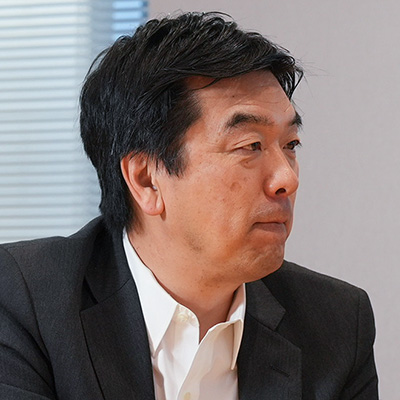 Discovery Accelerator
Discovery Accelerator
Kyoto University Alliance Station Sadao Kuromitsu -
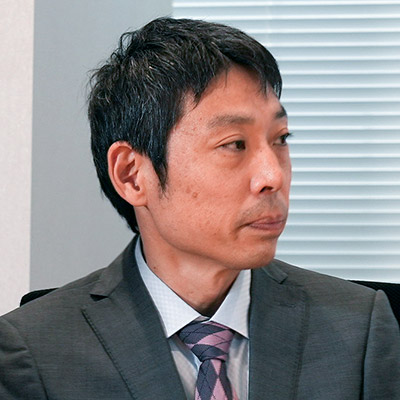 CMC Development
CMC Development
Chemical & Biological Technology Labs. Process Chemistry 2 Tsuyoshi Kitamura -
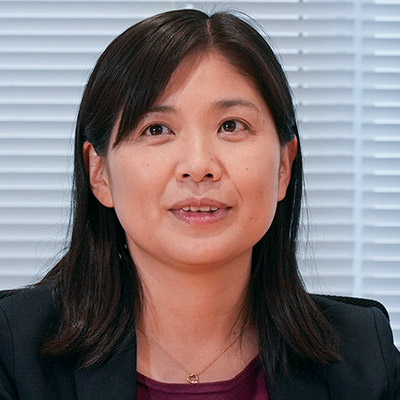 Development Project Management
Mikiko Kusano
Development Project Management
Mikiko Kusano
-
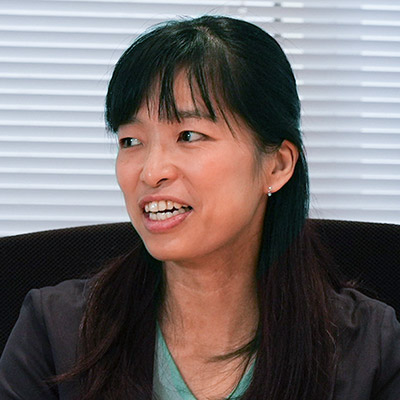 Pharmacovigilance
Pharmacovigilance
Medical Safety Sachie Yoshimura -
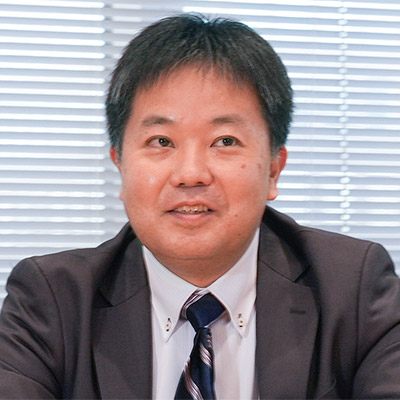 Medical Science Liaison
Medical Science Liaison
MSL 3G Tetsuo Kiso -
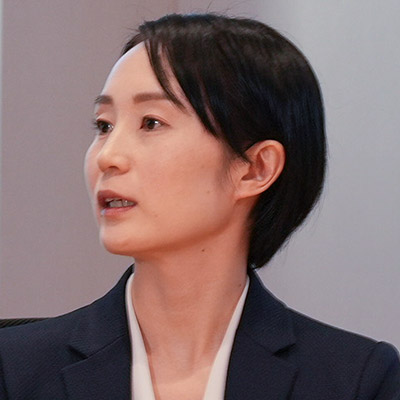 Japan Commercial
Japan Commercial
Hematologic Cancer Sales Unit Group1 Akiko Ogawa
*Names of departments are as of the time of interview.
Mr. Kuromitsu, you were involved in the research of the original theme of XOSPATA®, how did you start this research?
Kuromitsu In 2006, Dr. Hiroyuki Mano, then at Jichi Medical University, came to Astellas to introduce his new findings. He had identified a novel oncogene (EML4-ALK) and suggested that inhibition of this gene product would cause cancer cells to die and that detection of the gene would enable diagnosis of patients to be treated.
Although only 7% of non-small cell lung cancer patients would be eligible for this treatment, it was suggested that the EML4-ALK inhibitor could be expected to be successful in this patient group. We were convinced that focusing on these new cancer treatment possibilities and developing a drug would lead to tailor-made medicine that was distinctly different from the cancer treatments that were common them.
At the time, however, Astellas had a strategy of not entering the oncology area because of the large number of competitors. However, I persistently approached my supervisor without fear of opposition, and we began joint research with Dr. Mano in January 2007. In October of the same year, the Cancer Research Laboratory was officially established, and the company decided to focus on cancer research.
Did the timing overlap with the company's realization of the potential of the oncology field?
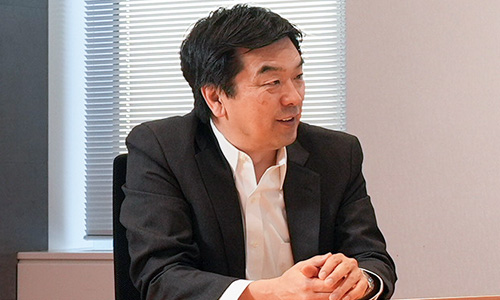
Kuromitsu I think so. In fact, I think that the management decision was the right one, since a number of oncology drugs are now our core bussiness.
XOSPATA® was originally created as ASP2215, a backup to ASP3026, an EML-ALK inhibitor for lung cancer. In the course of research, kinase profiling revealed that ASP2215 had stronger inhibitory activity against the FLT3 gene than the ALK gene. At that time, it was already well known that mutations in the FLT3 gene were involved in AML cell carcinogenesis, so we shifted our focus to exploring the potential of ASP2215 for AML.
Based on our research at the time, we believed that ASP2215 had three major potentials.
1.It could induce CR (complete remission*1) in patients
2.It could be expected to prolong life.
3.It could become a drug that could be taken at home.
The FLT3 gene is one of a group of central enzymes that allow bone marrow cells to proliferate. Stopping
the action of all of this group of enzymes would stop normal hematopoiesis as well as the growth of cancer
cells.Until then, the only treatment option for AML was to just suppress hematopoiesis and, if the
patient's physical fitness permitted it, to perform a bone marrow transplant. If hematopoiesis is
suppressed, the patient has no choice but to spend time in a management ward. For these challenges, given
the selective kinase profile, ASP2215 (XOSPATA®) had the potential to restore normal
hematopoiesis.
I
was really moved when I saw the development team's report, received six months after the start of the
clinical trial, that the growth of cancer cells had actually been suppressed and normal hematopoiesis had
returned.I think it also helped that we selected things that caused as little bone marrow suppression as
possible in animal studies.
At the time of development, there were other drugs for AML that had already entered the clinical trial (investigational) stage, but XOSPATA® was approved ahead of them because of its characteristic kinase selectivity.
*1A condition in which all signs of cancer have disappeared in determining the effectiveness of cancer treatment.
Next, we would like to talk about the manufacturing stage of the drug substance and formulation for clinical trials. Since this is a drug that has never been seen before, were there many difficulties during the manufacturing process?
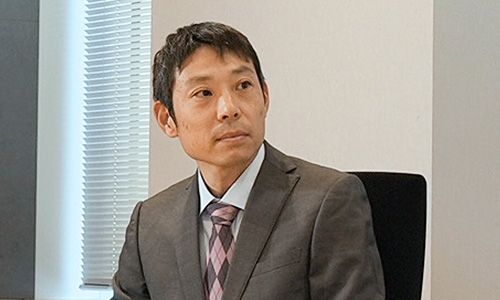
Kitamura
XOSPATA® was a project that many people collaborated on, and within that project, I was in
charge of
developing the synthesis process for manufacturing intermediates for the XOSPATA® drug
substance and
setting up the manufacturing facility.
I remember that we were proceeding with a clinical development
plan that was quite aggressive for the time. In response to this, we had to create a commercial process at
an early stage while also supplying the drug substance for clinical use, and I remember how difficult it
was. In particular, the initial production method for intermediates required reactions at ultra-low
temperatures, making the process unsuitable for mass production. In the early stages, we just covered this
with
manpower, and in the meantime, we focused on establishing a manufacturing method that could be
scaled up.
In fact, at the same time as XOSPATA®, we were using the same intermediate in another project, and we were receiving requests for production from both projects one after another. We set up five to six manufacturing plants at the same time for two projects, but this was the first time we had built something on such a large scale.We also established overseas bases in India and China, so it was difficult to overcome language barriers, cultural differences, and time zones.
Kuromitsu It was a difficult compound to handle even at the research stage, so manufacturing it was difficult, right?
Kitamura It is true that since it is an anti-cancer drug, there was a risk of exposure. Careful research and manufacturing was carried out on not only the drug substance but also the intermediates to prevent exposure to researchers and workers.
What challenges did you face during the clinical trial phase?
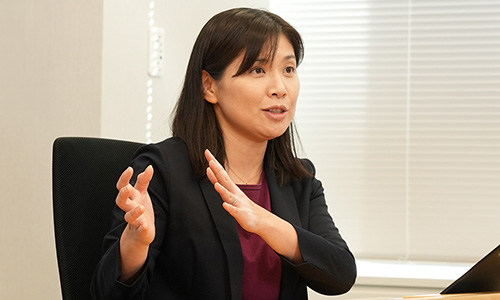
Kusano With the mission of accelerating clinical trials and quickly leading us to approval applications, I was in charge of everything from the launch of the clinical trials for XOSPATA® to approval applications. To tell you the truth, we were already conducting clinical trials for an AML treatment with a similar mode of action, but we stopped that and focused on clinical trials for XOSPATA®. It was confirmed to be effective at a low dose in Phase 1 clinical trials, and as a groundbreaking new drug it was designated as a product subject to the Ministry of Health, Labor and Welfare's Priority review. While this allowed us to give priority to the review of regulatory approval, it also put pressure on us to develop the product ahead of the competition to prevent the designation from being revoked.
In addition to AML itself being a rare disease, only about 30% of patients had mutations in the FLT3 gene, which is the target of XOSPATA®. To begin with, there was a situation where clinical trials for competing products and clinical trials for XOSPATA® competed for enrollment in a small number of patients.
How did you gather patients willing to cooperate with the clinical trial under such severe conditions?
Kusano What I focused on the most was appropriately conveying information about investigational drugs to doctors based on the non-clinical and clinical data that had been obtained so far. Even if it's a clinical trial for us, it's "treatment" for the patient. We will never force patients to participate if other treatments are best. For each patient, we discussed with the doctor the advantages and disadvantages of receiving this treatment, and were always looking for ways to consider it as an option. Good data for patients will lead to increased motivation for doctors, so we worked hard to overcome each challenge and incorporate XOSPATA® clinical trials into treatment.
In addition, since AML treatment in Japan is often coordinated between hospitals, under the leadership of the principal investigators, we also collaborated with Medical Science Liaisons and sales departments to create a flow of referrals of patients not only from the core hospital, which is the site of the clinical trial, but also from the hospitals with which the investigators are affiliated.
Does development require collaboration with people from many departments?
Kusano Yes.Clinical development is a department that intervenes and connects many departments, both before and after a product is launched. For example, non-clinical data is essential for conducting early clinical trials. We need to present data that will motivate doctors to conduct clinical trials, and so we work towards that by asking the research department to provide us with a variety of non-clinical data and their interpretations, and sometimes we ask development to create the data necessary to conduct clinical trials.
Of course, the manufacturing department is also an indispensable part of the clinical trial. We inform them of the quantities of drugs to be used in clinical trials, and they prepare them on time.

I was impressed by the communication with the pharmacovigilance department on the formulation of a Risk Management Plan (RMP)*2. Clinical trials are conducted on a limited population of patients, but after marketing, the drug may be administered to a wider population of patients. We discussed data interpretation and countermeasures in developing a document to minimize safety risks based on data obtained from clinical trials.
As mentioned above, we collaborated with the Medical Science Liaison on promoting inclusion in clinical trials.In addition, since Medical Science Liaison is a department that aims to maximize the value of drugs, we had many discussions about the future of XOSPATA® based on the data from clinical trials. We discussed future plans while summarizing doctors' opinions on how to interpret the data obtained from clinical trials and what kind of data we need to provide in the future.
I interacted with the sales department, primarily with those in charge of sales strategy. In order to promote the proper use of drugs, it is important to create high quality sales materials. We worked closely with them to incorporate the obtained data into sales materials with appropriate notation. I also participated in the development of sales strategies from the perspective of introducing data from clinical trials.
*2A document that summarizes a series of risk management processes from development to post-marketing in order to minimize the risk of a drug.
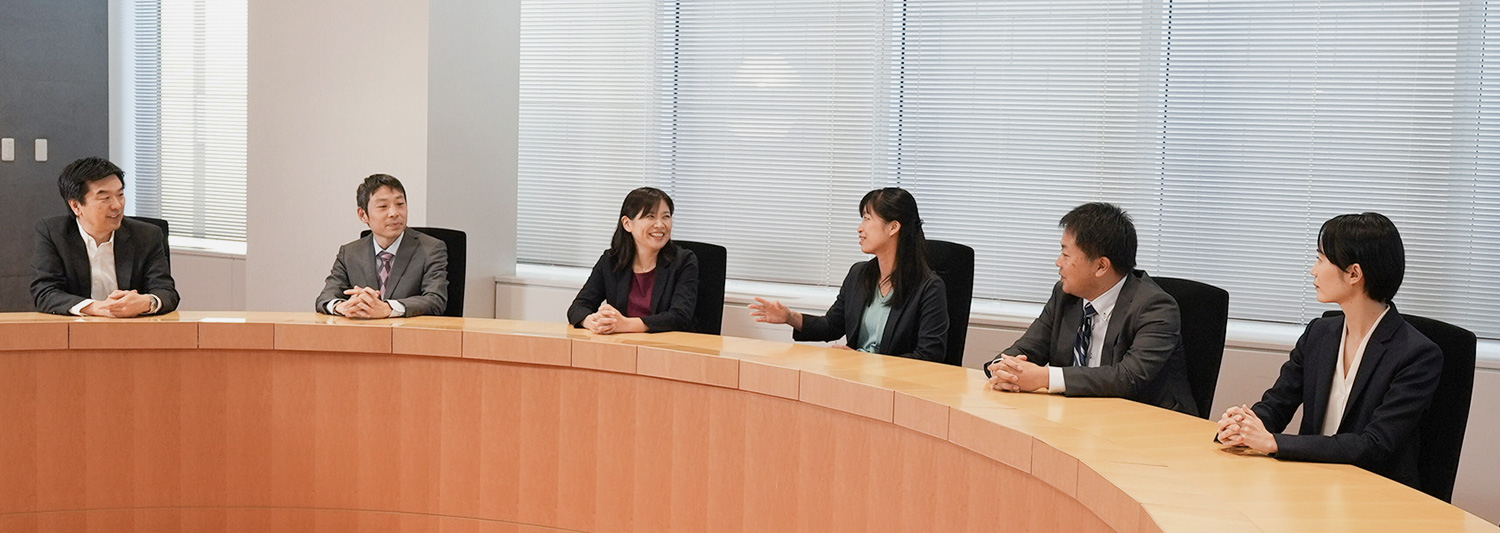
Thanks to everyone's various efforts, XOSPATA® was approved in Japan in September 2018. What has been the reaction since its launch?
Kusano At a party held immediately after receiving approval, we received enthusiastic messages from doctors who had collaborated with us in clinical trials: "Thank you for allowing us to be involved in the development of this revolutionary drug," "This is the drug that patients have been waiting for," and "We want to continue to work together to develop this drug.” We have also received letters from patients' families thanking us for allowing them to spend time with their families at home in their final days thanks to XOSPATA®. I felt that XOSPATA® has been long awaited by many people since the clinical trial stage.
Kuromitsu The fact that the compound that we at the research institute had seen as having great potential had become a drug that reduced cancer cells in patients touched our hearts. I was on assignment in the U.S. when the drug was approved, but I returned to Japan for the party and realized that the drug had reached patients.
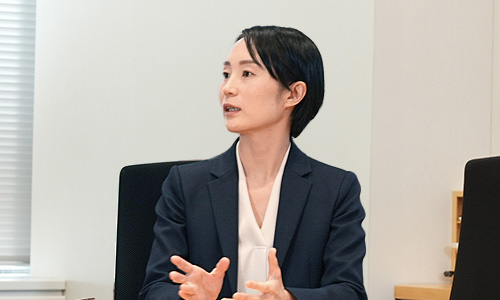
Ogawa AML is a fatal disease, and while genetic mutations that affect the prognosis of AML patients are being elucidated, few drugs are available to treat them. So even if a patient finds out that they have a genetic mutation, without a drug that is just despairing information. However, with the FLT3 mutation, which about one third of AML patients have, XOSPATA® has made it possible to prolong life and cure the disease. This is truly wonderful.
We have heard that some patients were able to spend the last six months of their lives at home just by taking XOSPATA®. There is also a patient who used XOSPATA® before and after bone marrow transplantation and has maintained his condition for three years after the transplantation without any problems. For these patients, their fate must have changed dramatically before and after the launch of XOSPATA®. I am grateful to the parties involved for creating such a revolutionary drug, and I feel a sense of mission in my work to bring XOSPATA® to as many patients as possible and to ensure that they use it correctly.
Kiso There had been no new treatments for AML for a long time, and there had been a 17-year gap between approved treatments in Japan. XOSPATA® was a new drug created under such circumstances, so I think doctors involved in AML treatment had high expectations for it. We have been hearing feedback that the treatment is responding well since the first year on the market, but recently there is evidence that clinical efficacy is enhanced when combined with bone marrow transplantation or hematopoietic stem cell transplantation. I feel that even doctors who were initially skeptical are now beginning to appreciate the effectiveness of XOSPATA®.
Kitamura Although I am far away from the treatment field of research and manufacturing, I am always aware of the company’s policy of "Patient Focus." Several times a year, I have the opportunity to listen to the voice of patients at company-sponsored lectures and PR events, and when I do, I truly feel the mission of working for a pharmaceutical company and the joy of doing this job.
The birth of XOSPATA® is, after all, a big step forward for the treatment of AML, isn't it? What kind of efforts are you making to create value for XOSPATA® after its launch?

Yoshimura I am in charge of evaluating information on the safety of XOSPATA® in the Pharmacovigilance Department, reporting to the authorities, and considering necessary measures based on the evaluation results. To ensure safety, it is of utmost importance to monitor safety information on a regular basis. In addition to reporting to the authorities in accordance with regulations,I continue to monitor safety by looking at overall information from the company's perspective.
We have alerted patients to side effects identified in the past in the package inserts and sales materials, but we are keeping a close eye on whether those details have changed or whether they need to be updated, even under the circumstances in which patients are now taking the drug.
As an example of updating safety information, about a year after XOSPATA® was launched, there was a discussion on whether or not to include a warning about leukemia cell "differentiation" in the package insert and, if so, how to describe it. Since this concept itself was still new in Japan, it was decided to include it in the "Other Precautions" section after close consultation with the authorities. As you can see, it is sometimes difficult to determine how to describe the information in the package insert. Even now, we are continuing to carefully monitor actual cases in which symptoms that may be associated with leukemia cell differentiation have been identified and comprehensively evaluated.
Ogawa As a Medical Representative (MR), I work on the last mile of delivering drugs to healthcare professionals and patients, and I have actually heard of a case in which a patient who used XOSPATA® developed differentiation syndrome. It is very important to collaborate with the Pharmacovigilance Department in order to identify the cause of symptoms that may be side effects and to connect them to the next treatment.
Kusano Even when the same data is used in an application for approval, each national authority may have different ideas on how to describe the data in the package insert.
Yoshimura Events that are not listed in the package inserts but are deemed to require attention are carefully managed by being designated as important potential risks in the pharmaceutical risk management plan and listed as important potential risks in sales materials and other documents.
How about in the Medical Affairs department?
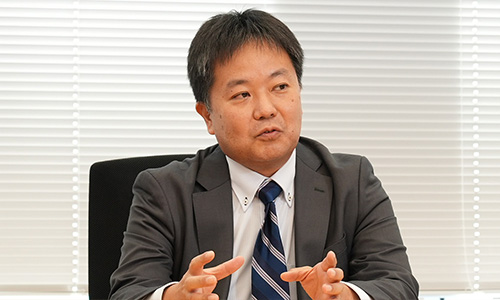
Kiso The Medical Affairs Division, including the Medical Science Liaison, is responsible for "Ikuyaku"( Drug Fostering and Evolution). Medical science liaisons provide information and exchange opinions in response to requests for information and questions from doctors. We are also involved in research support and post-launch information creation, leading to actions to maximize the value of XOSPATA®.
One of the episodes that left a lasting impression on me when I was in charge of XOSPATA® was that soon after the product was launched, a doctor pointed out a problem. In order to use XOSPATA®, a companion diagnostic test for FLT3 gene mutation was required, but the attached document for the test was incorrectly written. After explaining the error to the doctor who pointed it out, we worked with the sales department and approached the manufacturer to have the description of the test agent corrected. There are many doctors in Japan who are researching FLT3, and I realized how much interest there is in this drug.
What activities are being conducted by MRs who are looking at the actual field to maximize the value of drugs?
Ogawa Some people may have the image that MRs simply go to doctors' offices to promote products and provide information, but in fact there is a creative side to the job.
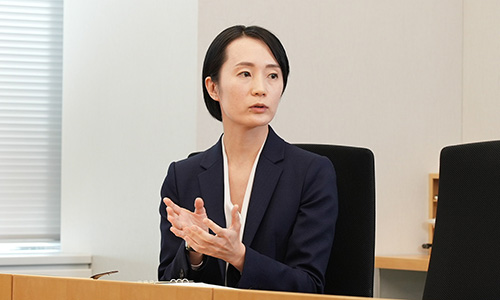
In particular, information about drugs like XOSPATA® is constantly being updated, but because the target disease is rare and the number of cases is small, it is necessary to broadly communicate the latest information to doctors. Amidst the flood of information, doctor-to-doctor method is extremely effective in conveying reliable and high-quality information. For example, if you are selling a frying pan, the manufacturer (=pharmaceutical company) of the frying pan can tell you things like, “It’s non-stick” and, "The handle is removable," but you have to wonder, "What kind of food can you make with this frying pan?" It would be more persuasive to hear this from someone who actually uses a frying pan (i.e. a doctor). My key challenge in creating value for XOSPATA® is to get KOL*3 doctors to communicate that it is safe and effective if prescribed in this specific way.
Directly conveying information from doctors with extensive experience to doctors with little experience through lectures and web symposiums is one way to create mechanisms that allow MRs to take the initiative. While always thinking about what kind of information we can provide now that will lead to an increase in the value of XOSPATA®, collaborating with MSL and other departments will also help us envision the future of MRs. I think this is an important job.
*3Abbreviation for Key Opinion Leader. Doctors and others who have influence in many aspects of the medical industry.
The difficulty of AML also includes the small number of cases.
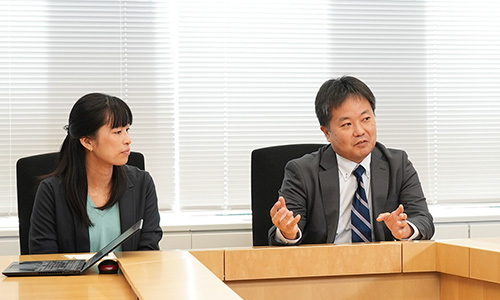
Kiso Since FLT3 mutation-positive AML is a rare disease, it takes time for cases to accumulate, but data (evidence) on the number of cases has started to be reported several years after the drug was launched on the market. When XOSPATA® is used in treatment, it is necessary to exchange opinions with doctors so that they understand its value, and this is one of the important jobs of us medical science liaisons and MRs.
Ogawa Even if you want to publish a paper at an international conference or in an overseas academic journal with a high impact factor, you may not be able to publish it unless a certain number of cases are collected. As a result, we often hear doctors' concerns about the tendency to conduct follow-up research at high-volume facilities overseas, where many cases occur.
Yoshimura One patient has weight over the whole.
Please tell us what you expect from XOSPATA® in the future.
Ogawa Approval is required to use multiple drugs together, but we often receive requests to allow XOSPATA® to be used in front-line and first-line settings, such as those who would like to use combinations that are not currently approved. There are many requests for expanded application.
Kiso Some doctors consulted with the Medical Science Liaison about the possibility of using XOSPATA® for cancers other than AML, such as lung cancer, as it has inhibitory effects on various kinases other than FLT3. It is considered to be a promising drug in various cancer fields.
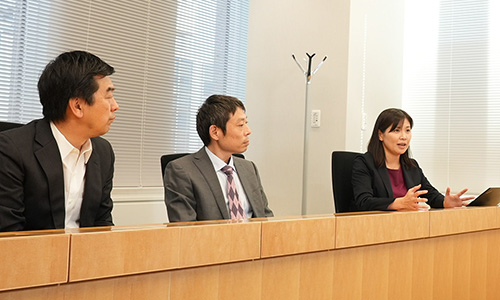
Kusano It is true that we sometimes receive requests for development in other cancers or inquiries about joint development. Although there is a question of how far we can respond within our company's strategy, we are making efforts to maximize the value of the drug and have it used by more patients. For example, a small number of pediatric patients are currently undergoing clinical trials. We are always looking for places where we can find the value of XOSPATA® and where we can further expand its possibilities.
In addition, contrary to expanding the patient population that takes XOSPATA®, it is also valuable to conduct detailed stratification to determine for which profile of patient it is particularly effective. I think this is important for enhancing drug development.
Finally, please tell us what you learned from the research and development of XOSPATA® and the subsequent value creation, and what you find rewarding about your work.
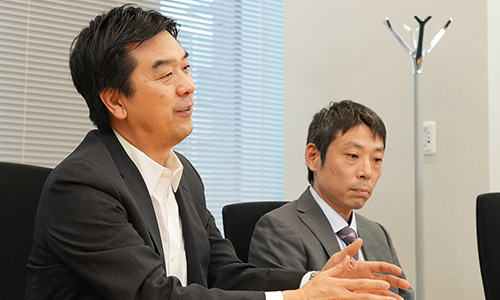
Kuromitsu The key to the success of XOSPATA® is that research and development began by selecting people who would benefit from the drug. Of course, it is important to approach targets such as specific genetic mutations, but it is meaningless unless there is also a method to identify people with those characteristics. Through research on XOSPATA®, I began to focus on speedy research and development with a clear concept.
Kiso Actually, I originally worked in the research department and worked under Mr. Kuromitsu. At the research institute, efficacy was determined through non-clinical studies based on biologies, but after being assigned to Medical Science Liaison, the most important thing for me was being able to experience the effects on actual patients first-hand. It has become very rewarding. On the other hand, I feel very disappointed and frustrated when I am unable to contribute to patients.
Additionally, over the past few years, new possibilities for XOSPATA® have emerged. As someone who has been involved with this product for a long time since its launch, I am very much looking forward to its future development.
Kitamura First, we work with a sense of mission to provide a stable supply of active pharmaceutical ingredients and pharmaceutical products, and ensure that they reach the patients who need them. Another thing that I find rewarding is building my own manufacturing process. I'm really happy when I design a process that can be scaled up and when I can actually scale it up. It is even more gratifying when this becomes a product like XOSPATA®, which contributes to patients.
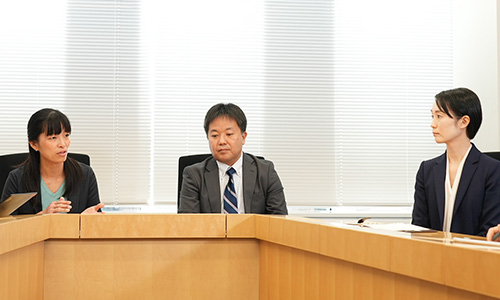
Yoshimura Medicines cannot be used unless they are effective and safe. We will continue to monitor safety, and if the need for new warnings arises, we will appropriately disseminate them and support XOSPATA® from a safety perspective.
Ogawa I am the closest to the medical staff. A doctor mailed to me, “This patient was wondering if he would be able to celebrate the next New Year, but he was able to celebrate his second New Year at home.” I was very happy when I received that email.
While conducting activities to spread the use of this valuable drug, I have witnessed a change in behavior. For example, medical institutions that had previously been reluctant to test for FLT3 mutations have begun to do so and doctors who were skeptical about the use of XOSPATA® after bone marrow transplantation before have resumed using the drug after transplantation. When I see that the value of XOSPATA® has been communicated, I feel a strong sense of fulfillment as an MR.
Kusano The most rewarding part of development is getting approval and delivering medicine to patients. We will bring together the strengths of company members, doctors, government agencies, and others, and move forward with a single thought in our hearts: "For patients.” When I am able to achieve that goal, I truly feel glad that I am doing this job.
Through this roundtable discussion, we were able to get a glimpse of how many people's thoughts come
together over a long period of time, and how the hope of a new drug is born.
Astellas will continue to take
on challenges. For our patients and for the future.
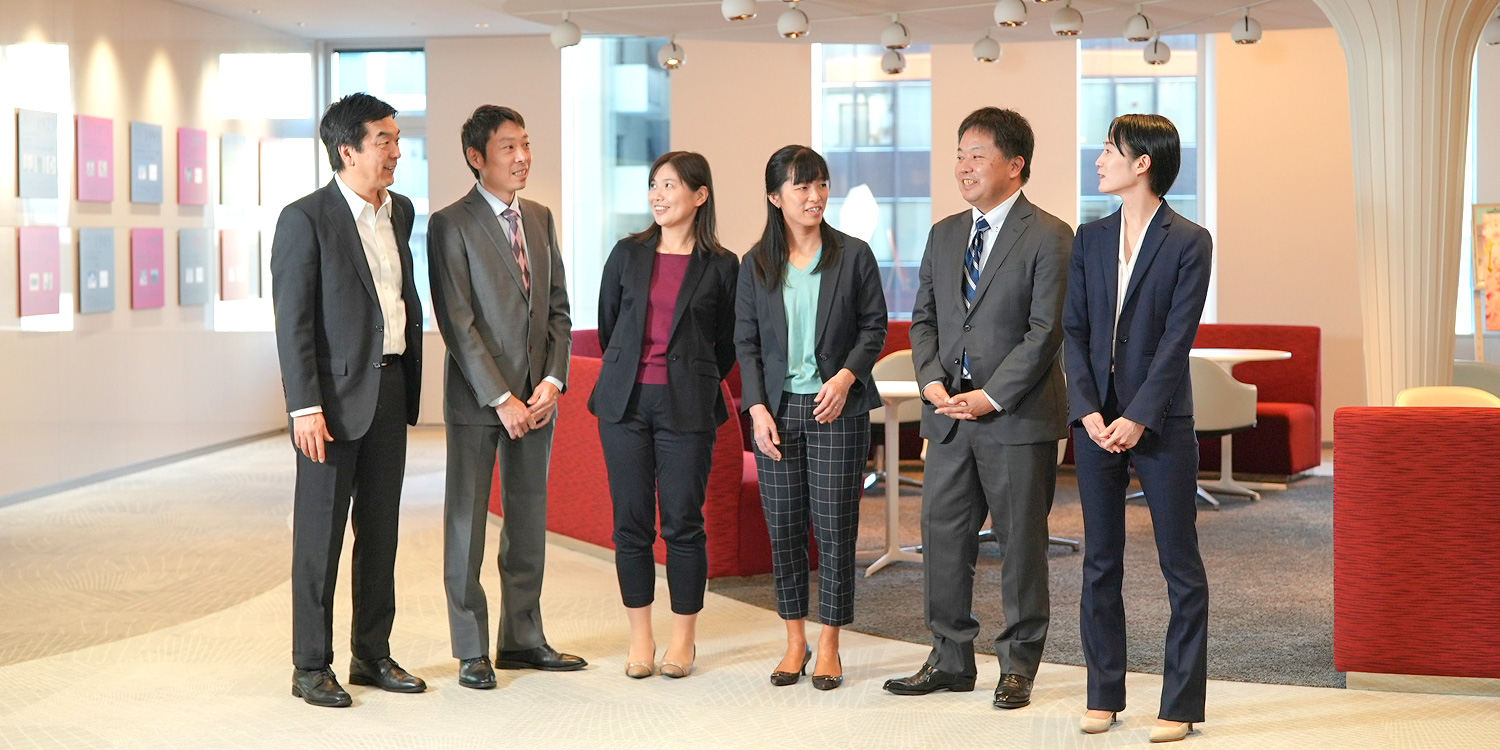
Cross talk Interview
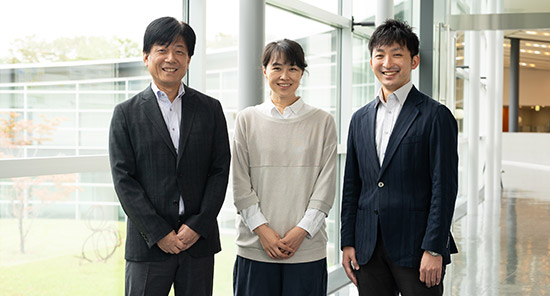
CROSS TALK×INTERVIEWFinding and utilizing individual talent.
Realize new drug discovery through a unique organization that combines the stability of pharma with the agility of biotech.
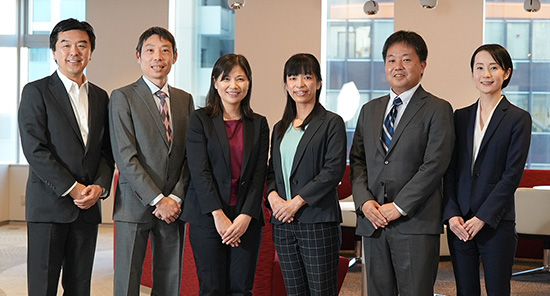
CROSS TALK×INTERVIEWResearch, Development and "Ikuyaku"(Drug Fostering and Evolution) ...
The many thoughts on drug discovery story from XOSPATA®
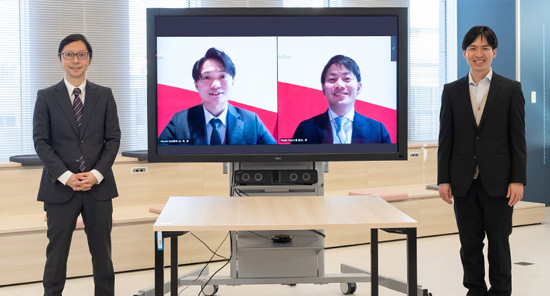
CROSS TALK×INTERVIEWMen's Participation in Childcare at Astellas
